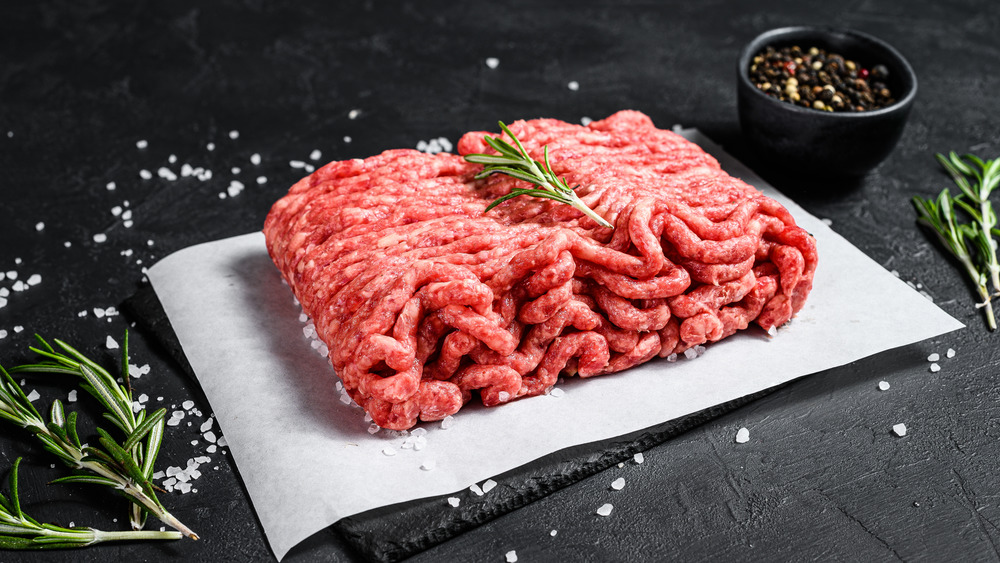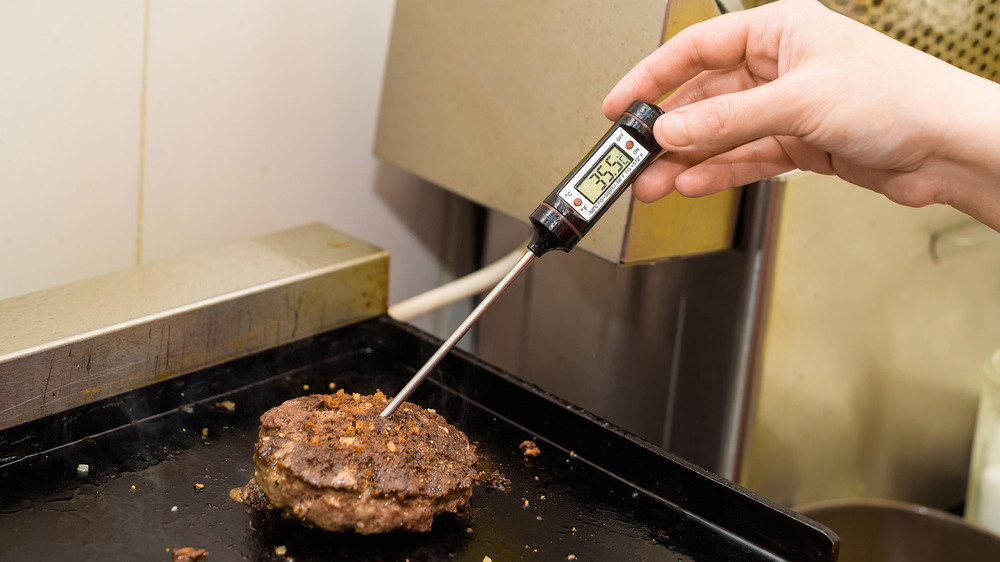This Is What Happens When You Eat Ground Beef That's Gone Bad
So you pull out that package of ground beef that was bought earlier in the week and notice that it's not really red anymore, but more of a grayish brown. It's also sitting in a shallow pool of slimy, rose-colored liquid. Is it ok to use? Won't the heat from cooking kill all the bacteria anyway? Maybe, but your best bet is to throw it out.
The CDC estimates that one in six people get food poisoning in the US each year. Symptoms typically include nausea, stomach pain, headache, fever, vomiting, and diarrhea. Since there are a variety of pathogenic bacteria that can cause foodborne illness, there is also a wide range of incubation periods that can occur before symptoms occur. Depending on the type of bacteria, the onset of symptoms could range from as little as an hour after consumption, to as long as a month (via LIVESTRONG).
Ground beef is more susceptible to harboring pathogenic bacteria because the grinding process leaves more of the meat's surface area exposed to air, providing more opportunity for bacteria to not only stick to it, but to proliferate. That's why ground beef will go bad faster than, say, a roast. It's also why it's so important to cook ground beef all the way through, to a bacteria-killing temperature of 160 degrees Fahrenheit.
Ground beef should be cooked to 160 degrees Fahrenheit
While it's true that pathogenic bacterias cannot be smelled or seen, there are a few easy ways to tell if your ground beef is ok to eat, or should really be tossed.
First of all, look at it. The meat should be mostly or completely red on the outer surface, although it may be a brownish color on the inside, or even partly on the outside surface, due to a lack of exposure to oxygen. Argyris Magoulas, a specialist at the USDA's Food Safety and Inspection Service, told Insider, "It's not unusual to see that off color. The color of meat sometimes changes. If it doesn't smell or have stickiness and was bought by the 'sell by' date, it should be okay."
Next, feel it. James Peisker, a butcher and co-founder of Porter Road, explains, "If the meat is sticky or super slimy, throw it away. Wet and juicy is OK, but you never want your meat to be slimy to the touch" (via Today).
Lastly, do a sniff test. Fresh ground beef has very little smell, but once it begins to spoil, it will smell foul. Spoiled meat is more susceptible to harboring pathogenic bacteria. If in doubt, chuck it.


